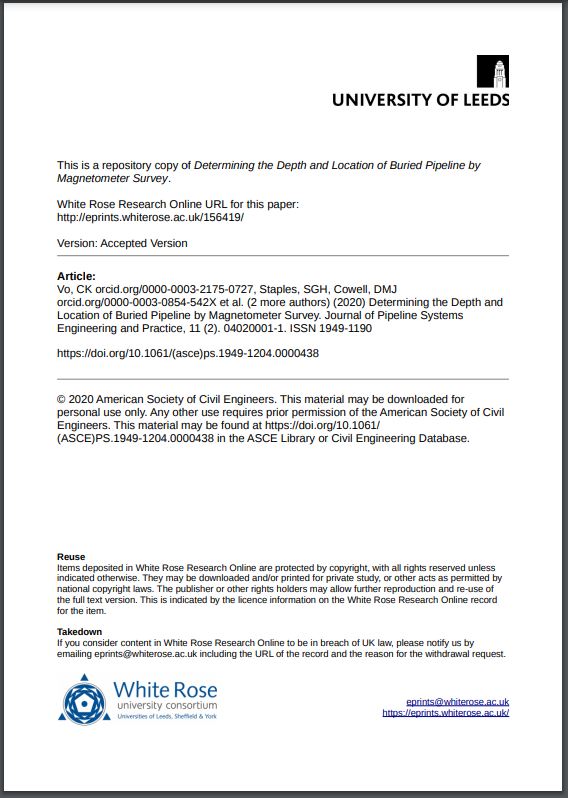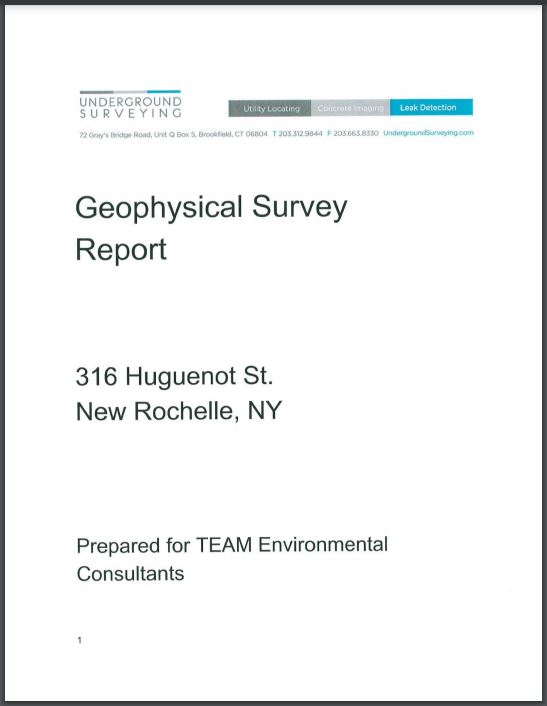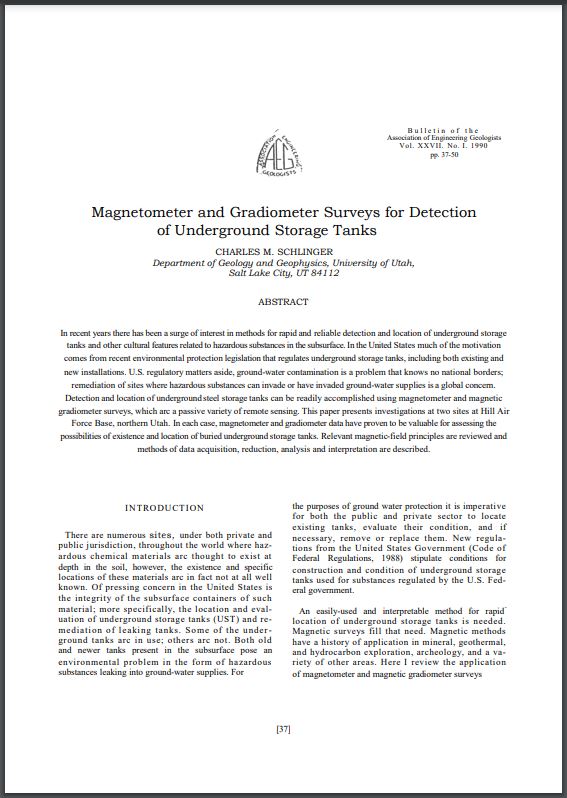📙 Geotechnical GPR Overview
Ground Penetrating Radar for geophysical underground investigation.
Most newer models and brands can detect utilities from 3 meters all the way upto 9 meters down, depending on the strength of gpr and frequency used as well as the site conditions.
Also used for final clearance checks and to locate other utilities that cannot be found with electromagnetic locators.
Overview of Ground Penetrating Radar (GPR)
GPR systems consist of a control unit, a radar antenna, and a display unit. They can be operated by a single person and are portable, making them suitable for use in various environments.
GPR's effectiveness depends on the conductivity of the ground; it performs best in dry, low-conductivity materials like sand, rock, and ice, where the radar waves can penetrate deeper.
The Theory of Ground Penetrating Radar for Utility Locating.
Ground Penetrating Radar (GPR) systems are sophisticated geophysical devices that use radar pulses to image the subsurface. They are invaluable tools for utility locating, allowing professionals to detect and map underground features without excavation.
GPR technology works by emitting high-frequency radio waves into the ground.
When these waves encounter a material with different electrical properties, part of the energy is reflected back to the surface, where it is captured by the receiver.
Analyzing these returned signals provides information about the location, depth, and type of underground objects.
✅ Applications of Geophysical GPR Locating
GPR systems are used for a wide range of applications, including but not limited to:
Utility Detection and Mapping: Locating and mapping buried utilities such as water, gas pipelines, electrical conduits, and sewage systems.
Environmental Assessments: Identifying underground storage tanks, detecting contaminated soil and groundwater.
Archaeology: Mapping and analyzing archaeological sites without disturbing them.
Infrastructure Evaluation: Inspecting bridges, roads, and buildings for structural integrity and voids.
Forensics: Helping in crime scene investigations by locating buried objects, ordnances and weapons.
✔️ Advantages Ground Penetrating Radar
Non-Destructive: GPR is a non-destructive method, meaning it can locate utilities without disturbing the ground.
Metallic and non-metallic: It can detect both metallic and non-metallic objects, including plastic pipes and fiber-optic cables, which are invisible to traditional locators.
High Resolution: GPR provides high-resolution images that help in identifying the size, shape, and depth of the target.
Real-Time Results: Offers the ability to see beneath the surface in real-time, allowing for immediate analysis and decision-making.
🚫 Limitations of Geophysical GPR Signals
While they have some limitations, their advantages often outweigh these, making GPR an essential tool in the utility detection and mapping toolkit.
Soil Conductivity: High-conductivity materials like clay or wet soil can absorb radar waves, severely limiting the depth of penetration.
Depth Limitation: While GPR can reach depths of up to 30 feet (9 meters) in ideal conditions, the actual depth is often much less, depending on soil conditions and the type of radar used.
Requires Expert Interpretation: The data collected by GPR can be complex and requires experienced professionals to accurately interpret.
Interference: Metallic surface clutter, overhead power lines and cars can interfere with the radar signals, affecting data quality.
🆚 Geotechnical Cart GPR Technology Comparison Questions and Answers
Geotechnical Cart GPR Q&A comparison Overview.
Can find ferrous objects? Yes
Can find non-ferrous objects? Yes
Works in silty soil? Yes
Works in clayey soil? Possible
Works in organic soil? Yes
Works in sandy soil? Yes
Min frequency (MHz): Model specific, examples as low as, 270MHz, and some manufactures have 300MHz, 400MHz models as the devices lowest frequency.
Available frequencies: Gpr Specific, Duel Frequency models with 300 and 800MHz, single frequency models with 400MHz.
Max frequency (MHz): 900MHz
Effort, training for data interpretation: High, manufacture training, online course, in-person field training recommended.
Relative cost: Low/Medium ($15,000~$30,000)
Max depth: Typically 3.6m-9m
-some as shallow as 1m max depths for 900MHz models
- 0.4m max depths for 400MHz
-270Mhz at upto 6m max depths.
Specific Applications: Detects metallic and non-metallic pipe and cable utilities in real time.
Specific Utilities that can be located: metal cables, plastic conduits~, pvc water pipes, storage tanks UST, sinkholes, voids.
Conclusion of Geophysical GPR
GPR systems for utility locating offer a powerful means of exploring the subsurface environment, providing vital information that can help prevent costly or dangerous strikes on underground utilities.
In summary, Ground Penetrating Radar systems are versatile tools with wide-ranging applications across different fields, from construction and archaeology to environmental studies and law enforcement.
Their ability to provide detailed images of the subsurface without excavation makes them invaluable for many geophysical and investigative applications.
 Geotechnical GPR Papers
Geotechnical GPR Papers
Other GPR Models: RD1100, RD1500, Pavescan RDM, UtilityScan Pro/DF, Model 626 3-Wheel Cart, Model 656 Rugged Cart, Opera Duo, GSSI UtilityScan, GSSI BridgeScan, GSSI Utility Scan Pro GPR, GSSI UtilityScan DF, LLMX-100 Utility Location GPR, LLMX-200 Utility Location GPR, noggin Ground Penetrating Radar



